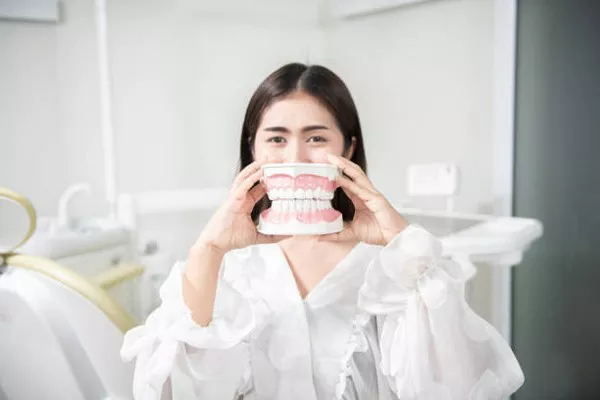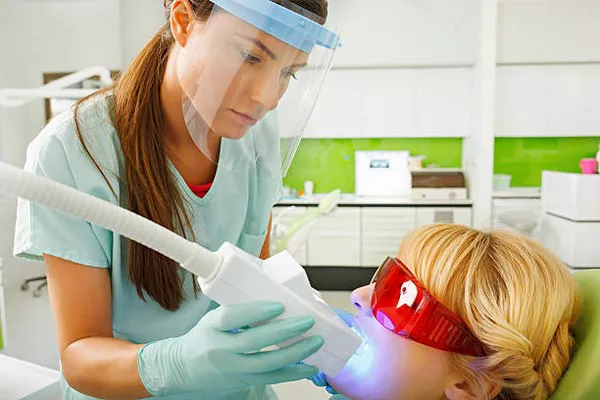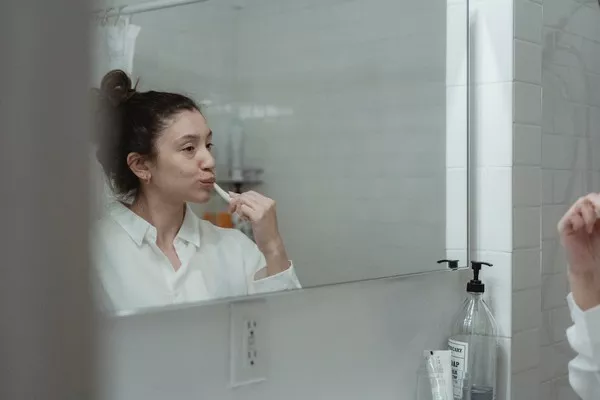Does orthodontic want to unplug tooth first?
!
I hesitated……
People who love to laugh are not bad luck, a simple smile, can intoxicate people;
Of course, with a set of white straight teeth, is even more perfect.
However, some people think that the teeth are not too bad, do not correct, to pull teeth, pull teeth, other teeth are easy to loose.
Many parents bring their children to consult correction, when they hear the word “tooth extraction“, they immediately change their face.
In fact, a lot of people may not know the heart, in the end before the correction of tooth extraction purpose is what?
Unplugged tooth whether can you have sequela like worry again in that way?
Before we answer that question, let’s understand how orthodontics works.
The scientific name for orthodontics is orthodontic, and the technique used to straighten teeth is orthodontic.
This technique can restore the teeth to order, using the mechanism of resorption and regeneration of alveolar bone.
Alveolar bone is a special bone in the human body. Give it pressure, it will absorb, give it traction (tension), it will regenerate.
Orthodontic technology is to make full use of the characteristics of the alveolar bone, under the action of the external force of the braces, the pressure of the side of the alveolar bone will be absorbed, the traction of the side of the alveolar bone will regenerate, so as to achieve the purpose of crooked teeth neat.
This process is: tooth stress ¡ú transfer to alveolar bone ¡ú alveolar bone resorption and regeneration ¡ú tooth movement.
Why should unplug tooth correction?
¢Ù With the evolution of human reproduction, the proportion of human head has changed a lot.
The brain takes up more and more volume, but the mandible becomes smaller and smaller.
The mandible is the home of the teeth. The area of the home is getting smaller and smaller, resulting in the 32 teeth of the human being not neatly arranged in a perfect arc, and the most intuitive result is crowded teeth, buck teeth.
¢Ú In China, periodontitis has become the first cause of tooth loss in adults. The key pathogenic factor is dental plaque microorganisms.
Americans have a strong sense of prevention of periodontal disease, they will regularly wash teeth, messy teeth are corrected in the youth!
Because the messy teeth make it difficult to clean the mouth, it is easy to breed more dental plaque, leading to periodontal diseases.
How to pull tooth space to do?
Orthodontics is to move from the original position to a new position and use the space created by tooth extraction to align teeth or recover protruding teeth.
With proper treatment, the teeth will eventually align and return to normal adjacency, leaving no gaps between the teeth.
Does unplug tooth have harm?
After detailed X-ray and model analysis, the doctor prudently selected the extraction treatment, and used the appropriate correction force for correction, which is a physiological process without harm.
On the contrary, crowded teeth and protruding teeth cause abnormal occlusion of teeth, which is prone to dental and periodontal diseases for a long time.
Of course, tooth extraction is not so arbitrary, and there are certain rules: doctors should choose the relatively least important teeth that solve the problem, not just “remove” anyone who is listed.
In the choice of tooth extraction, doctors follow the principles: try not to pull teeth;
Try to extract bad teeth (caries, loose teeth, bad shape teeth);
Try to pull out small teeth;
Symmetrical tooth extraction.
Don’t pull the incisors: because the incisors have the most aesthetic impact.
Do not pull out fangs (tiger teeth) : because fangs have a greater impact on chewing and fullness under the face.
Do not pull out the sixth instar tooth: it has the strongest chewing function and will only be removed if there is extensive damage.
Commonly recommended teeth for extraction: the two bicuspid teeth behind the fangs.
The two attached bicuspid teeth are similar in shape, and when one is removed, the other can function.
So doctors often choose to remove the upper, lower and left bicuspid teeth.































